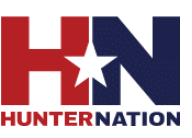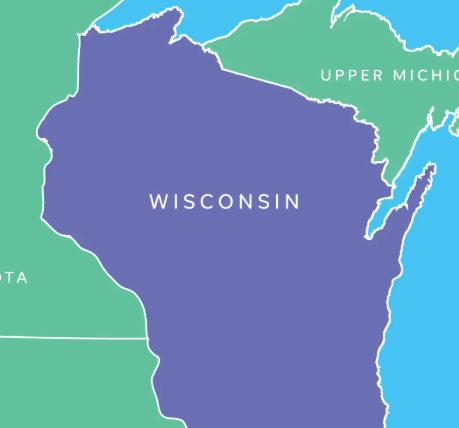Updated on May 14th, 2025
Restoration News highlights how the right’s turnout failure and weak infrastructure cost them Wisconsin in April 2025.
What to Know:
- Schimel lost to Crawford by 238,740 votes despite her outspending Schimel by $8 million.
- Turnout dropped by about 1 million voters compared to the 2024 presidential election.
- Schimel underperformed Trump by 634,000 votes; Crawford underperformed Harris by 367,000 but still won.
- Roughly 76,000 Trump voters may have stayed home or crossed over in the 2025 Supreme Court race.
- Restoration News says Republicans need 500 more full-time operatives and permanent infrastructure to compete.
In April 2025, Wisconsin delivered a wake-up call to conservatives across the country. The bruising loss in the Wisconsin Supreme Court race—despite a significant overall spending advantage by conservative-aligned outside groups—exposed an uncomfortable truth: infrastructure, organization, and voter contact, not just money, will decide the future of Republican victories.
Susan Crawford; photo from Campaign website
Despite running a credible campaign, former Attorney General Brad Schimel fell short against liberal judge Susan Crawford in the state’s pivotal Supreme Court race. Crawford won 1,301,998 votes to Schimel’s 1,063,258, sealing a 238,740-vote victory in the first unofficial count. The Wisconsin Elections Commission will have final results approximately thirty days from when the election was held on April 1, 2025.
According to the Brennan Center, liberal candidate Susan Crawford outspent conservative Brad Schimel by $8.9 million in direct campaign spending during the 2025 Wisconsin Supreme Court race. However, when factoring in outside spending, conservative-aligned third-party groups, many boosted by national donors including Elon Musk, outspent their liberal counterparts overall.
This means that while Crawford had the edge in personal campaign funds, the broader conservative ecosystem poured more money into the race through independent expenditures. On paper, it’s just another special election loss. But to many on the right, it felt like something bigger—a warning siren about 2026 and beyond.
A Party Built on People Who Don’t Live for Politics
Charlie Kirk, founder of the youth-focused conservative organization Turning Point USA, has built his career mobilizing young right-leaning Americans on college campuses and beyond. He’s no stranger to the pulse of grassroots energy—or the lack of it. And when Kirk speaks candidly about where the Republican Party stands, his words reflect not just his personal take but the frustrations of a movement that’s falling behind in turnout strategy.
Charlie Kirk speaking at CPAC 2017. Photo by Gage Skidmore.
“We must realize and appreciate that we are the LOW PROP party now,” Kirk said on X in the wake of the Wisconsin Supreme Court loss.

He’s referring to low-propensity voters—working-class Americans who believe in conservative values but don’t live or breathe politics. Welders. Waiters. Plumbers. Construction Workers. General Laborers. People who may support the GOP’s message but often skip off-year elections because no one reminded them it mattered.
Grassroots group Hunter Nation figured this out over eight years ago. Hunters are, and always have been, natural low-propensity voters—quietly conservative, deeply patriotic, and historically disengaged. But Hunter Nation saw that gap long before anyone else did. As Keith Mark explains here, they’ve been working year-round to organize, educate, and turn out these voters, cycle after cycle.

Image: Hunter Nation Logo
Hunter Nation is at least five years ahead of other grassroots groups when it comes to understanding and activating low-propensity conservatives. With efforts like their Hunt the Vote campaign, they didn’t just recognize the problem—they built the blueprint before most groups even knew it existed.
In contrast, Democrats have built a high-propensity voting coalition—college-educated, professionally organized, and politically obsessed. They vote early, vote often, and treat every cycle as existential. For a party rooted in common sense and personal freedom, that’s a hard pill to swallow. But as Charlie Kirk rightly points out, being right isn’t enough. Winning demands presence. It demands infrastructure. And above all, it demands year-round commitment.
The Left’s Permanent Campaign Model
Restoration News chronicled the strategic imbalance: Democrats never stop campaigning. Their infrastructure doesn’t disappear after Election Day—it evolves. They refine messages, retain staff, and expand data operations in the quiet months while Republicans regroup, rest, or simply move on.
Wisconsin voter drop-offs, 2024–2025. Data Source: Restoration News.
The Schimel-Crawford race revealed just how costly that gap can be. In 2024, Donald Trump won Wisconsin by 29,600 votes. By 2025, Schimel had lost 634,000 of those voters. Crawford herself underperformed Kamala Harris by 367,000 votes but still won easily.
What happened? A million voters stayed home, and most of them were Republican-leaning.
Data Source: Restoration News
Conservative groups like Wisconsin Family Action did their part—knocking on 50,000 doors, distributing 200,000 pamphlets—but the scale was no match for the Democrats’ perpetual machine. Hunter Nation turned out 450,000 low-propensity Trump voters in 2024, spending under $4 per vote. But nearly half of Wisconsin’s hunters still vote Democrat. In a low-turnout race, that matters.
To close the gap, Restoration News estimates that Wisconsin Republicans would need 500 additional full-time operatives on the ground and ten times the number of grassroots volunteers. That’s not a seasonal need. That’s a structural requirement.
Turnout Collapse—and Messaging That Missed the Moment
Crawford didn’t just win by turning out her side—she did so while Schimel failed to turn out his. She replicated 96% of Governor Tony Evers’ 2022 vote total. Schimel only mustered 84% of the voters who backed Republican Tim Michels that year. That 12-point turnout gap proved devastating.
The messaging didn’t help either. Republicans fumbled what should have been a straightforward case for voter ID laws. Instead of clarity and conviction, the GOP’s argument became muddled and reactive—while Democrats stuck to simple, emotional themes and cast their candidates in a favorable light months ahead of Republicans' media push.
Wisconsin has seen this play before. In 2020, Joe Biden entered Election Day with a 600,000-vote early ballot advantage. In 2024, Harris’s lead shrank to 200,000, and Trump overcame it to win. But in the 2025 Supreme Court race, early voting strategy on the right was practically nonexistent. And the Democrats reclaimed the edge.
The Elusive Swing Voter—or Just a Lost Voter?
The most jarring figure in the postmortem comes from Restoration News: 76,000 Wisconsinites who voted for Trump in 2024 may have backed Crawford in 2025. Not because they suddenly became liberals. But because they weren’t chased, reminded, or engaged.
These weren’t ideological converts. They were disengaged conservatives—or voters with weak political attachment who had been mobilized once, then forgotten. The left didn’t forget. They knocked again. They texted again. And they won.
A New Republican Mandate: Infrastructure, Messaging, and Urgency
There’s now widespread agreement on the right about what must happen next and the calls are consistent:
- Build permanent infrastructure. Stop hiring and firing staff on election cycles. Fund full-time organizers at the precinct level, every year.
- Embrace early voting. This can no longer be a taboo issue among conservatives. If the base is hesitant, educate and normalize it—culturally and strategically.
- Simplify the message. The other side wins on emotion, not policy PDFs. Cut through noise with sharp, relatable narratives.
- Master the voter chase. If Democrats can track and contact low-propensity voters across platforms, so can Republicans. But it takes tools, time, and talent.
- Dominate local elections. School boards. City councils. Judicial races. Build a pipeline of trained conservatives who can grow into higher office.
This isn’t theory anymore—it’s necessity.
Wisconsin as America’s Political Barometer
What happened in April wasn’t a shock because Crawford was a stronger candidate. It was a shock because Wisconsin showed just how fragile Republican wins can be when the infrastructure isn’t there. In November 2024, 3.4 million Wisconsinites voted. In April 2025, just 2.3 to 2.4 million did. That drop-off was fatal—and entirely preventable.
The solution doesn’t require changing minds. It requires showing up. And that’s the real takeaway: this wasn’t about a messaging problem or even a money problem. It was about a presence problem. The left was there. The right wasn’t.
Wrap Up
If conservatives hope to hold—or expand—power in 2026, they need to treat every year like a presidential cycle. That starts with treating Wisconsin not as a loss to explain away but as a template to fix everything that went wrong. The conservative movement has the right policies. What it now needs is the operational obsession to match the left’s intensity.
Groups like Restoration of America are laying the ground work and Hunter Nation has proven the cost-per-vote model works. Now it’s up to the rest of the movement to catch up—and build the army of organizers, doers, and believers that the next two election cycles will require. Because Democrats are already working on 2026. And if Republicans don’t, Wisconsin won’t be the last wake-up call.


